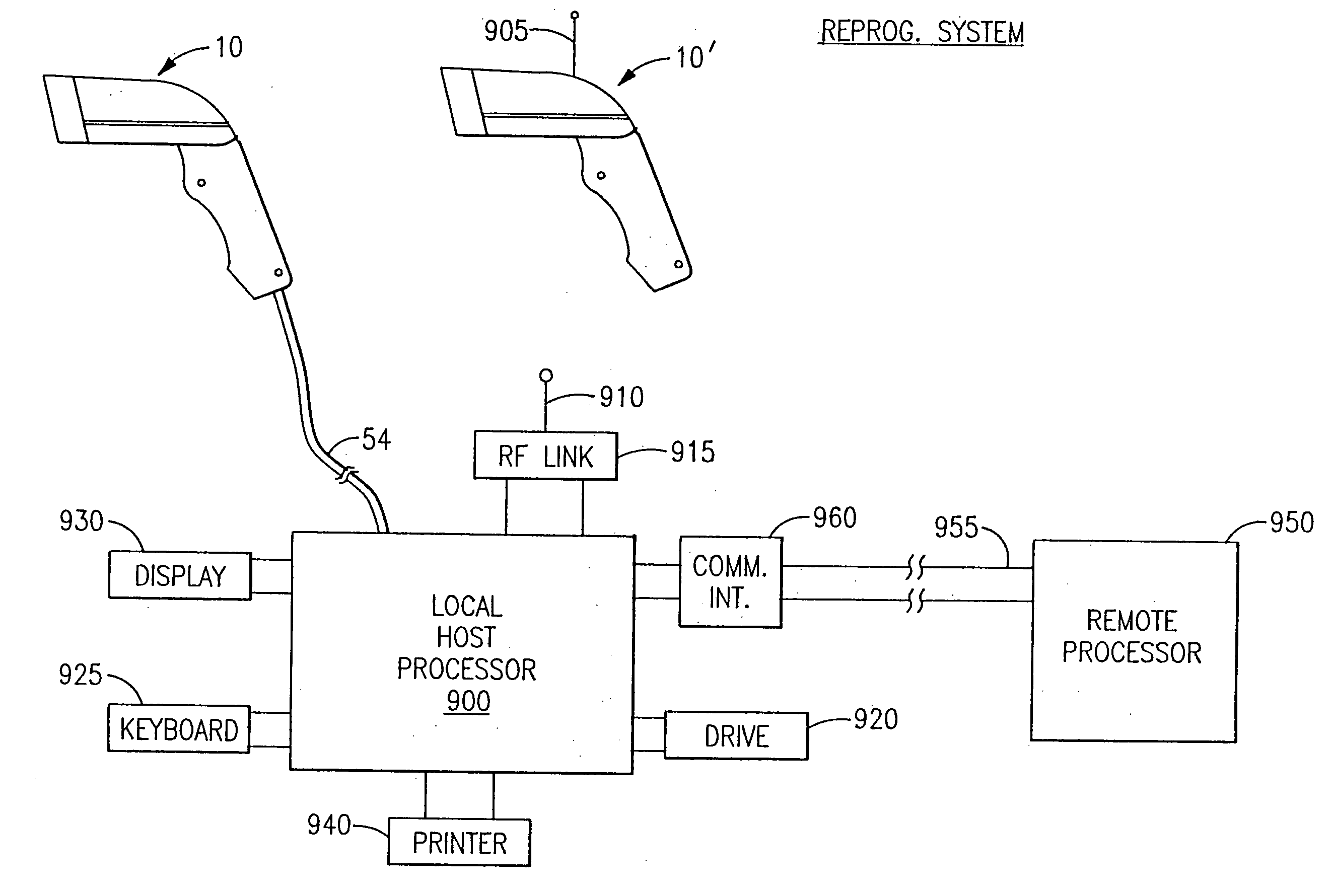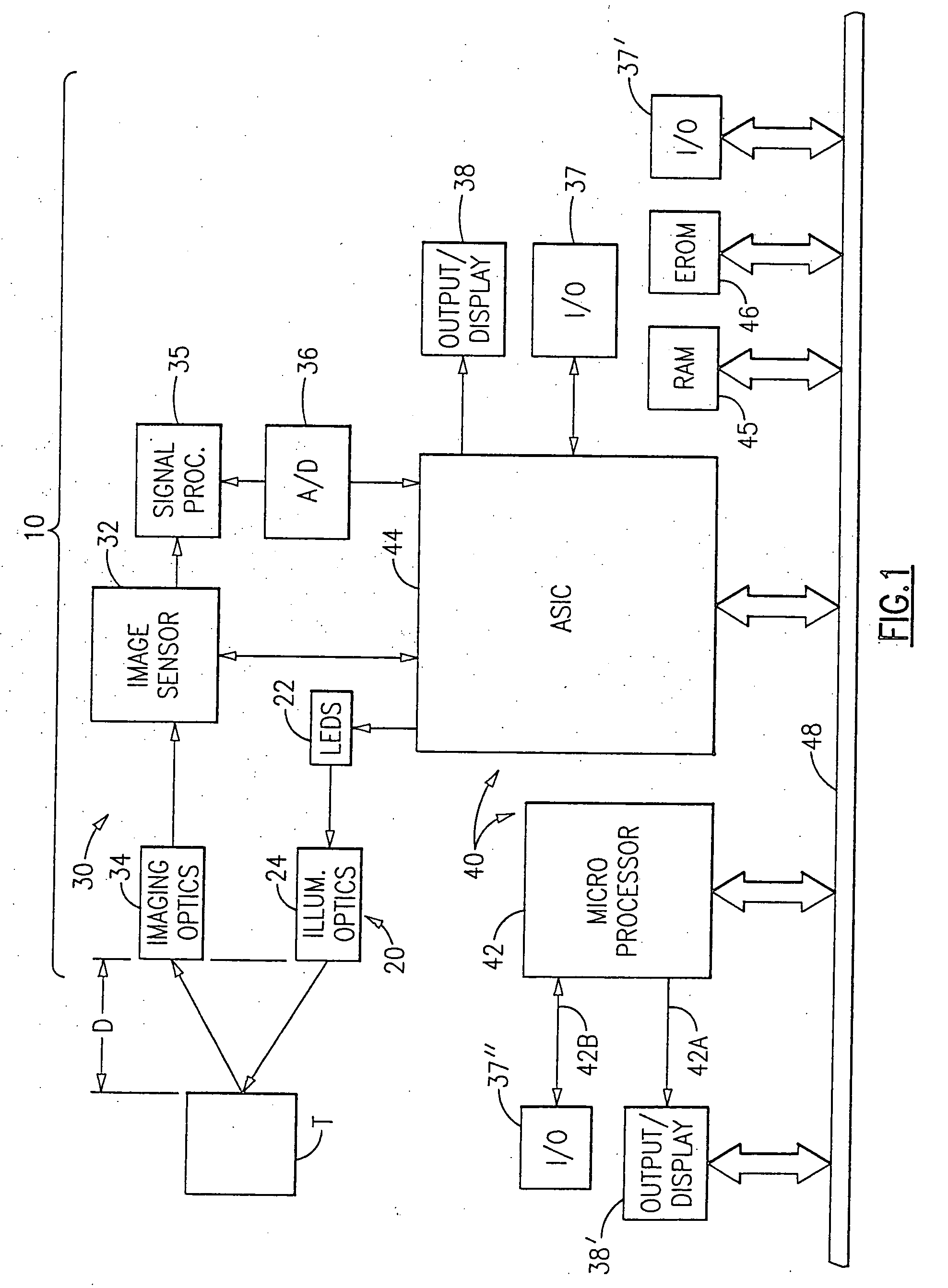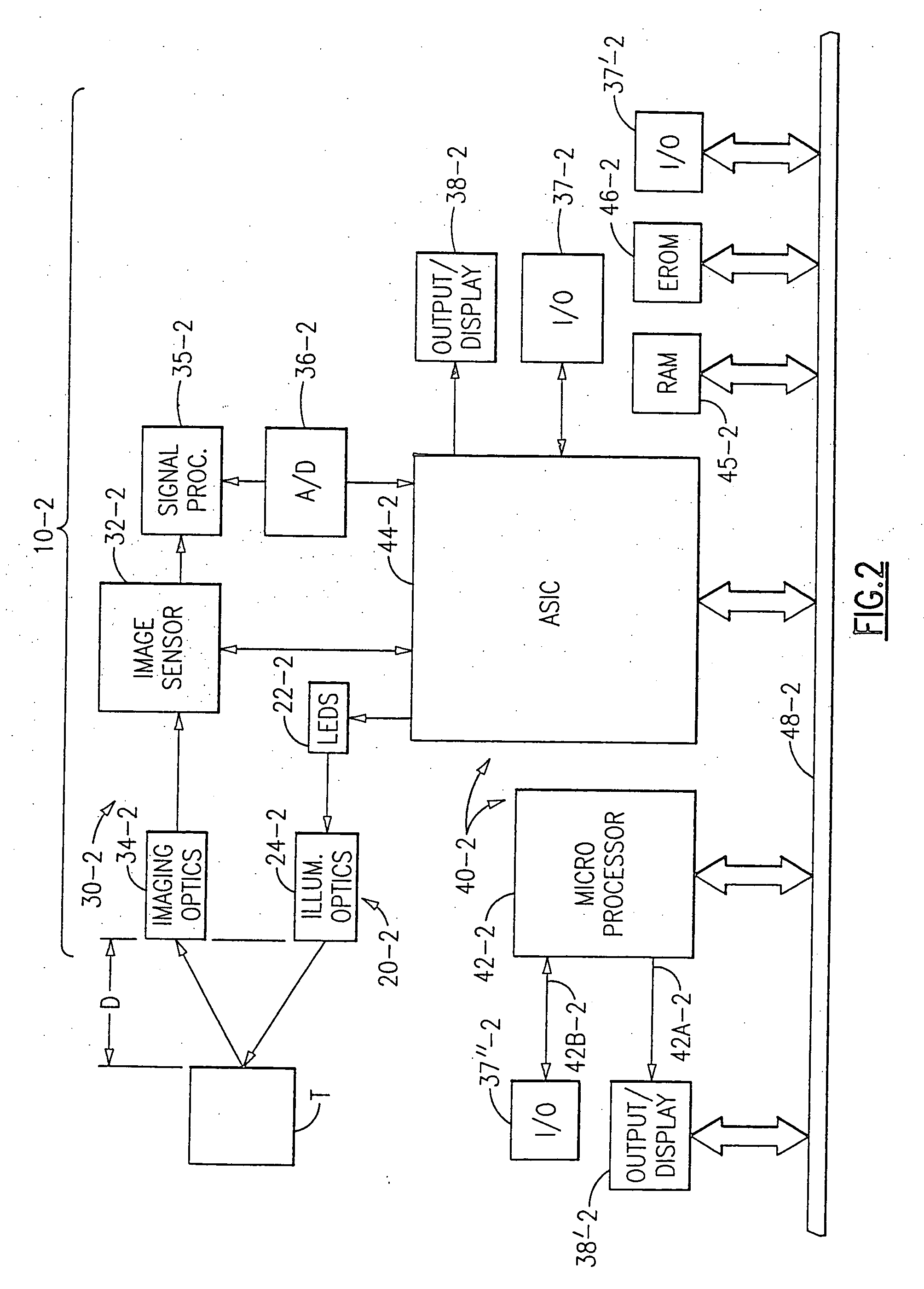Optical reader comprising illumination assembly and solid state image sensor
an optical reader and illumination assembly technology, applied in the field of hand-held optical reading devices, can solve the problems of affecting the reading process, etc., and unable to be dealt with in this way for a long tim
- Summary
- Abstract
- Description
- Claims
- Application Information
AI Technical Summary
Benefits of technology
Problems solved by technology
Method used
Image
Examples
first embodiment
[0240] In the invention, both the scanning and decoding phases of the reading process proceed without interruption. In embodiments of this type a relatively large number of blocks of scan data are stored in and / or shifted through a relatively large memory space. As this occurs, address information (e.g. address pointers) which is indicative of the beginnings and endings of the scan blocks are updated, substantially in real time, so that the reader can at all times keep "track" of which block of scan data is the most recently completed block. Then, as each decoding cycle is completed, it is immediately followed by another decoding cycle which begins at the beginning of the most recently completed block of scan data, skipping over any then older blocks of scan data. In this way, both the scanning and decoding operations take place at a substantially 100% utilization rate, thereby assuring a high data throughput rate.
second embodiment
[0241] In the invention, the scanning and decoding phases of the reading process preferably (but not necessarily) proceed without interruption. In embodiments of this type blocks of scan data are stored in two or more sequentially selected memory spaces, having a predetermined size, scan data for each newly begun scan being written over the scan data in the memory space with the then oldest complete block of scan data. As this occurs, the memory space with the then most current block of scan data may be identified using an address pointer which directs the reader to one of the known scan data starting addresses.
[0242] Either of the two above-described embodiments of the invention may be practiced using either a 1D image sensor or a 2D image sensor, such as an image sensor of the charge coupled or CCD type. In the case of bar code symbols, this is true whether the bar code symbols are 1D symbols or 2D symbols. This does not, however, mean that embodiments which use 1D image sensors h...
PUM
 Login to View More
Login to View More Abstract
Description
Claims
Application Information
 Login to View More
Login to View More - R&D
- Intellectual Property
- Life Sciences
- Materials
- Tech Scout
- Unparalleled Data Quality
- Higher Quality Content
- 60% Fewer Hallucinations
Browse by: Latest US Patents, China's latest patents, Technical Efficacy Thesaurus, Application Domain, Technology Topic, Popular Technical Reports.
© 2025 PatSnap. All rights reserved.Legal|Privacy policy|Modern Slavery Act Transparency Statement|Sitemap|About US| Contact US: help@patsnap.com



